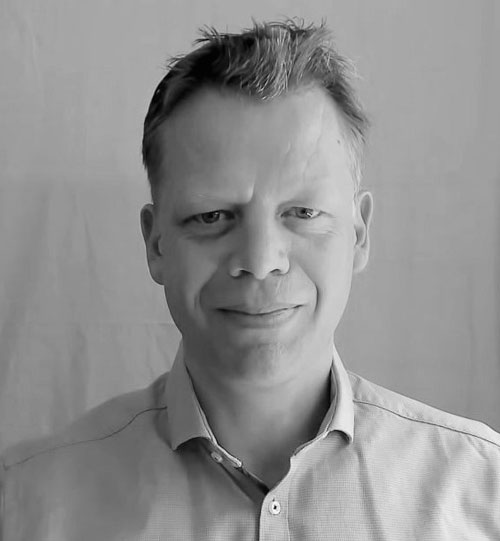IS YOUR INVENTORY TOO BIG OR TOO SMALL?
The answer is that it depends on the desired service level
Over 100% is unnecessary and stock can be reduced without risk
Small changes in service levels can lead to significant changes in inventory size
There is no linear correlation between service level and inventory size
The last point is important because service level is not a matter of standard deviation. If it was that easy, optimal inventory sizing would never be an issue.
Increasing the service level from 90% to 100% can mean doubling your inventory. At the same time, people intuitively think "better too much than too little". This creates the risk of overshooting the optimal inventory size. Inventory costs are far higher than the return on capital. Many studies show that the annual cost of running a warehouse is 15-20% of your inventory value.
Is there value to be found? Cenarity offers you a free-of-charge analysis of your inventory. You get proven value for money before you spend a dime. Contact us and let's have a preliminary talk.

How many resources do you spend on inventory optimization?
When Cenarity continuously monitors each SKU and recommends optimizations, your time is shifted from analysis to decisions.

Monitoring
We insert continuous monitoring of data flow into your existing systems. If a desired service level has already been set, Cenarity ensures that inventory parameters are continuously adjusted in your ERP system as demand patterns and lead times change.

Recommendation
Imagine a digital assistant that can feed you daily recommendations that only require a decision. If you accept, Cenarity updates your ERP system. If you decline, the given recommendation is down-prioritized. Thus, the relevance of recommendations is adapted to your knowledge and input.
Fast track process
Get the analysis after a few weeks
All your processes are already tracked digitally and we can access them remotely. Therefore, we can do the analysis without you having to invest many man-hours.
After 2-3 weeks we have key figures and conclusions ready. During this period, you will be able to validate both the expected value and the methodology. We can then monitor and simulate accurate results and forecasts based on continuously updated data.
Our goal is to give you peace of mind before you invest.
See how quickly the investment pays for itself
Prices vary according to the complexity of the task.

Business Case Analysis
€0
Is there value for money

Monitoring & Recommendation Service
From €800/month
No binding period and limit on the number of users

Consulting Services
Per agreement
Clarified in the Analysis phase
Will Cenarity's recommendations save you more than the cost? See specific examples below.
Examples of
Business cases
01.
Business case from manufacturing:
The company, a subcontractor to the automotive industry with an annual inventory of DKK 35 million.
The warehouse is gathered in one location divided into a raw material and finished goods warehouse. The focus was on the raw materials inventory, which, in addition to feeding manufacturing, also partly acts as a service inventory for spare parts. The company plans based on MRP, which basically means that stock purchases are only made based on confirmed orders.
The demand pattern is thus a combination of manufacturing orders and spare parts sales primarily to the EU and secondarily to China. A primary/secondary supplier setup is not used. At the same time, we saw great variation in lead times from suppliers. This variation is often pushed further down the value chain and creates a lot of re-planning in manufacturing and poor customer service.
This uncertainty had created a fear of product shortages, which had pushed the service level on many items above 100%. There was a savings potential of 16% just by bringing the service level down to 100%. So we are talking about a saving with no effect on customer loyalty.
02.
Business case from wholesale:
The company sells electronics accessories with an annual inventory of DKK 27 million.
The company's customers expect short lead times but suppliers are located in Asia with long lead times. Planning is based on a min/max principle.
Minimum inventory is thus the trigger point for purchasing and must also act as a buffer before new deliveries arrive. In our simulation, we work with frequency analysis of variation in both demand and lead times. When you run many iterations on this, a picture emerges of what a given minimum inventory provides in terms of service level. The company is now continuously notified of possible inventory optimizations by changing the service level. An item number can show an inventory saving of 22% by changing the service level from 100% to 95%.
The max parameter is the order size, which should be optimized based on capital tied up, transport costs and volume discounts. By feeding the simulation model with these parameters on each item number, the company now receives continuous notification of optimal order size.
Tuning your erp system and free up man hours from excel
Cenarity doesn't change your workflows (unless you want it to):
Business as usual, all purchasing and manufacturing processes run through your ERP system. However, "Garbage in - Garbage out" also applies to even advanced systems. Cenarity helps you and your ERP system to execute as correctly as possible. We read the data from your ERP system and feed important parameters back to your ERP system.
Cenarity does not require training on new systems:
Cenarity is not a BI system that requires analysis and interpretation. Cenarity presents decision proposals that only require a "yes" or "no". Easy to relate to and increased efficiency in the organization as the execution of business decisions become the focal point.
Cenarity: an advanced calculator taken to the next level
In our development work with the Cenarity system, we use AI-based algorithms and advanced simulation models that can take stochastic variables into account. We don't believe that supply chain optimization can be put into a simple formula using averages and standard deviations because reality is far too complex for that.
Behind the
The brains behind Cenarity
Behind Cenarity are 3 bright minds:
The two software developers Tomas Rosin and Bartosz Bień and CEO Carsten Engelsfelt, who handles all customer contact. The latter saw a need to leverage AI and existing data to optimize processes more efficiently after working in process optimization for 20+ years across Europe. He met the equally experienced developers Tomas Rosin and Bartosz Bień, who had been providing Smart Grid simulation services for 8 years.
Together they created the Cenarity system and founded the company of the same name.

Tomas Rosin
Software developer

Bartosz Bień
Software developer

Carsten Engelsfelt
CEO